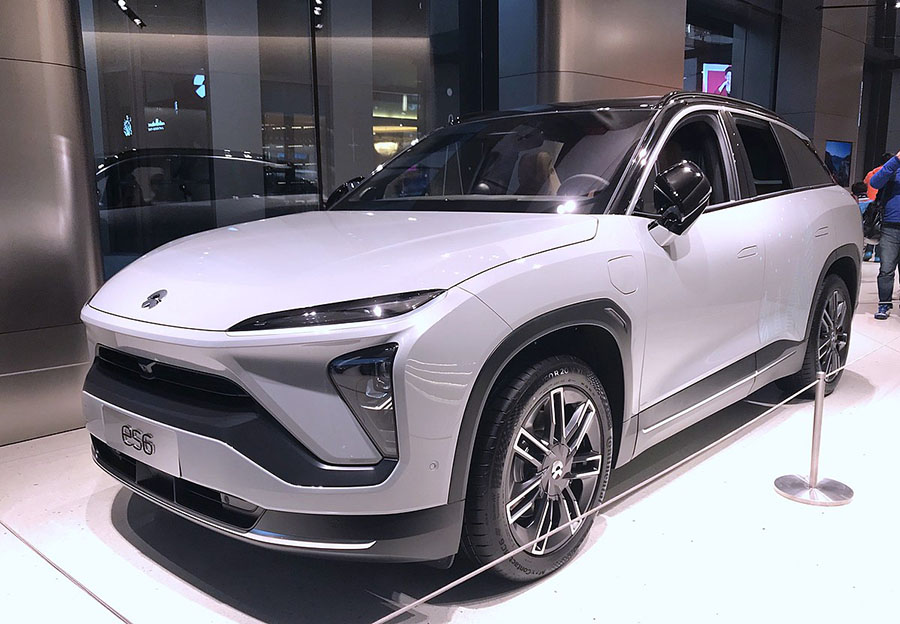Until recently, electric vehicle start-ups such as Faraday Future, Byton and Nio were seen as promising newcomers who would heat up the established car manufacturers. In the meantime, the advances are withering and the harsh reality is catching up with the companies.

The news from a California courtroom would normally not be worth mentioning. But the client who was recently granted bankruptcy processing was Jia Yueting, a Chinese billionaire and founder of the electrical startup Faraday Future. Thus, “Chapter 11” of American bankruptcy law comes into force, which regulates a controlled reorganization of company finances of an insolvent company. The procedure was made possible by the fact that at least 80 percent of the supposedly around 100 Faraday Future creditors had agreed to the plan.
This is good news for the Chinese-American company, because now you can look for new investors and the much needed financial injection. Because without them, it will be pretty tight for Faraday Future and the future of the formerly praised company looks bleak. It remains to be seen whether capital can be raised in times of the COVID-19 pandemic. There is not much left of the high-flying plans that were announced four years ago at the Consumer Electronics Show (CES) in Las Vegas. The Las Vegas factory is not going anywhere, instead the first FF91 model is to be rolled off the assembly line in a much more modest California facility.
It is also uncertain whether this will happen this year, as originally planned. The new CEO Carsten Breitfeld is also aware of the fact that smaller bread rolls have to be baked, which made it clear that Faraday Future needs two more models in order to be viable. How this should work when the FF91 is such a difficult birth is currently unknown to anyone. Breitfeld, who likes to see himself as Steve Jobs in the automotive industry, is not a pattern of consistency himself. The former BMW and Byton manager switched to the Chinese company Iconiq last year and soon joined Faraday Future. There is no shortage of ideas to ensure survival: To get money, Faraday Future also wants to mutate into a supplier and make its technology available to other companies.

But Faraday Future is not alone at the financial wailing wall. The Chinese electric vehicle manufacturer Byton is also in financial difficulties – the COVID-19 virus does the rest. In April, Byton sent 200 short-time employees to its North American headquarters. The pre-production of the first-generation M-Byte started in Nanjing at the end of last year, but the newcomer is still far from large-scale production. The Chinese have already postponed the planned start of sales of the M-Byte, which should take place in the USA and Europe in the third quarter of this year, to 2021. Meanwhile, the state-owned company FAW and thus the Chinese government are pulling the strings in the background. The state’s involvement may help with the sluggish financial situation, but is slowing down Byton’s desire to expand. This may also be one of the reasons why the top managers last picked up the doorknob when they left the company headquarters.

Chinese competitor Nio suffered a bloodletting last year: the co-founder Jack Cheng left the company. Officially, the retirement was based on his age, but since Cheng was responsible for manufacturing, vehicle development and supply chain management, the farewell is likely to be related to problems in these areas. It is astonishing that Nio gets into an imbalance. The Shanghai start-up is considered well managed. Especially with the ES8, the ES6 are already two vehicles on the Chinese market, while some competitors are still getting lost in announcements. But the loss of subsidies and a slump in demand on the home market has brought Nio into trouble. In short: the money became scarce and the bankruptcy vulture hovered over the promising start-up.
But there seems to be light at the end of the tunnel. A community of investors led by Hefei City Construction and Investment Holding, CMG-SDIC Capital, plans to invest around $1.5 billion by March 2021. “The investment is another important milestone for the long-term growth of the electric car manufacturer. Due to the investment, Nio will have sufficient financial resources to drive its business development,” said the carmaker.









